The Anatomy of an 18th Century Shoe
Women's shoes in the 18th century were truly things of beauty. This week, we take a closer look at two such pairs from the Fashion Archives at the Maryland Historical Society.
|
Baltimore Town in 1752 by Joahn Moale, 1845.1.1 Gift of Samuel Moale |
|
Mrs. John Moale (Ellin North Moale) by John Hesselius c.1767, 2015.6 Gift of Dr. Stephen F. Jencks, Christopher S. Jencks, and Helen J. Featherstone |
The first pair are high-heeled shoes were worn by Ellin North Moale (1740-1825), wife of John Moale. Both important Marylanders, John Moale is known for an early drawing of “Baltimore Towne” and Ellin is purported to be the “first white infant born in Baltimore Town” (a statement that remains in dispute today).
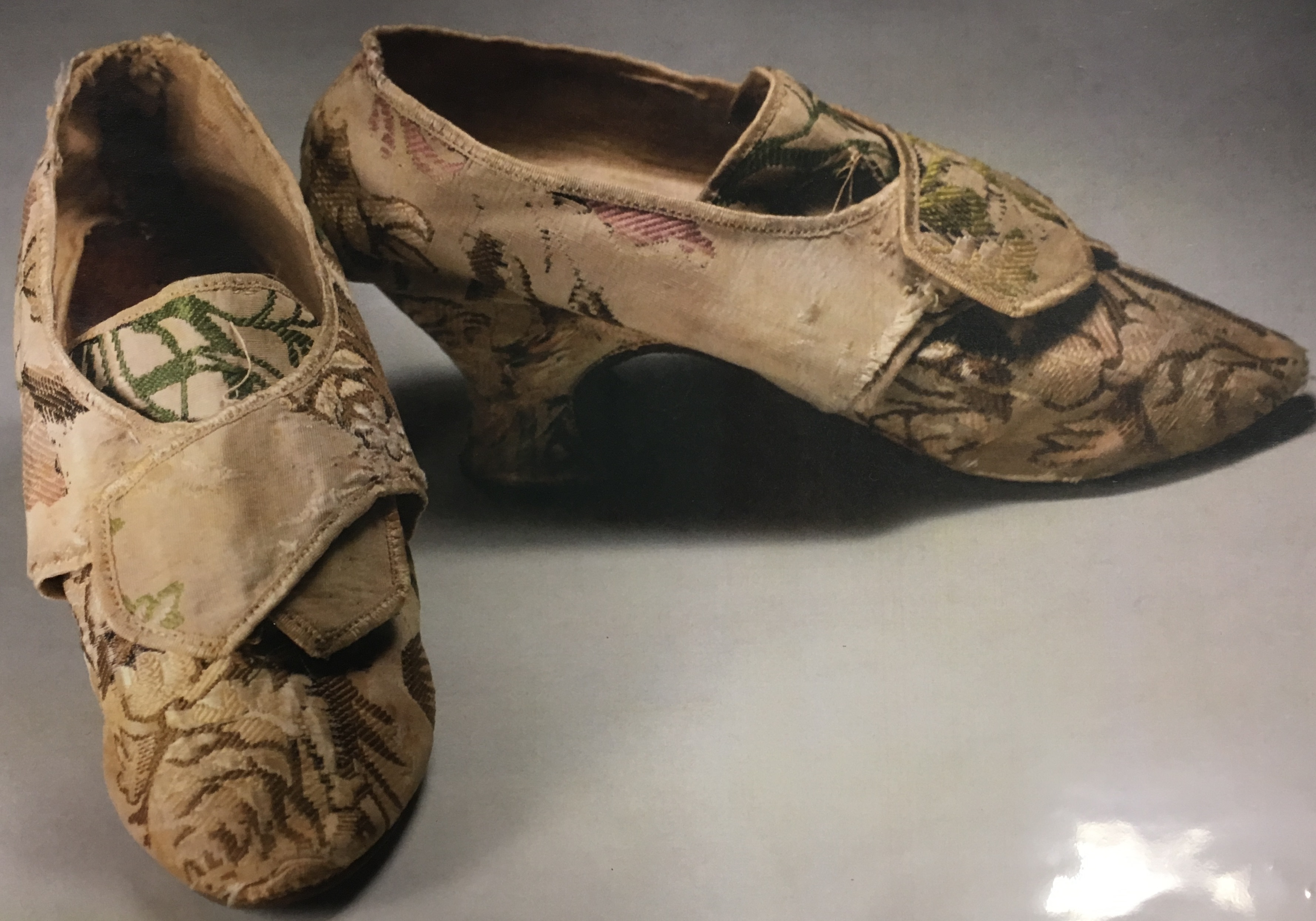 Woman's shoes, 18th century. Worn by Mrs. John Moale (Ellin North Moale), 1946.106.2a,b Gift of Mrs. James Bordley, Jr. Woman's shoes, 18th century. Worn by Mrs. John Moale (Ellin North Moale), 1946.106.2a,b Gift of Mrs. James Bordley, Jr. |
The high-heeled buckled shoe worn by Mrs. Moale prevailed throughout most of the eighteenth century in America. Women's shoes were made of fabric with leather soles and a French of Louis heel. The Louis heel was named after King Louis XIV of France, a short man who donned high heels to increase his stature, and whose mistress Madame Pompadour carried the fashion into ladies shoes.
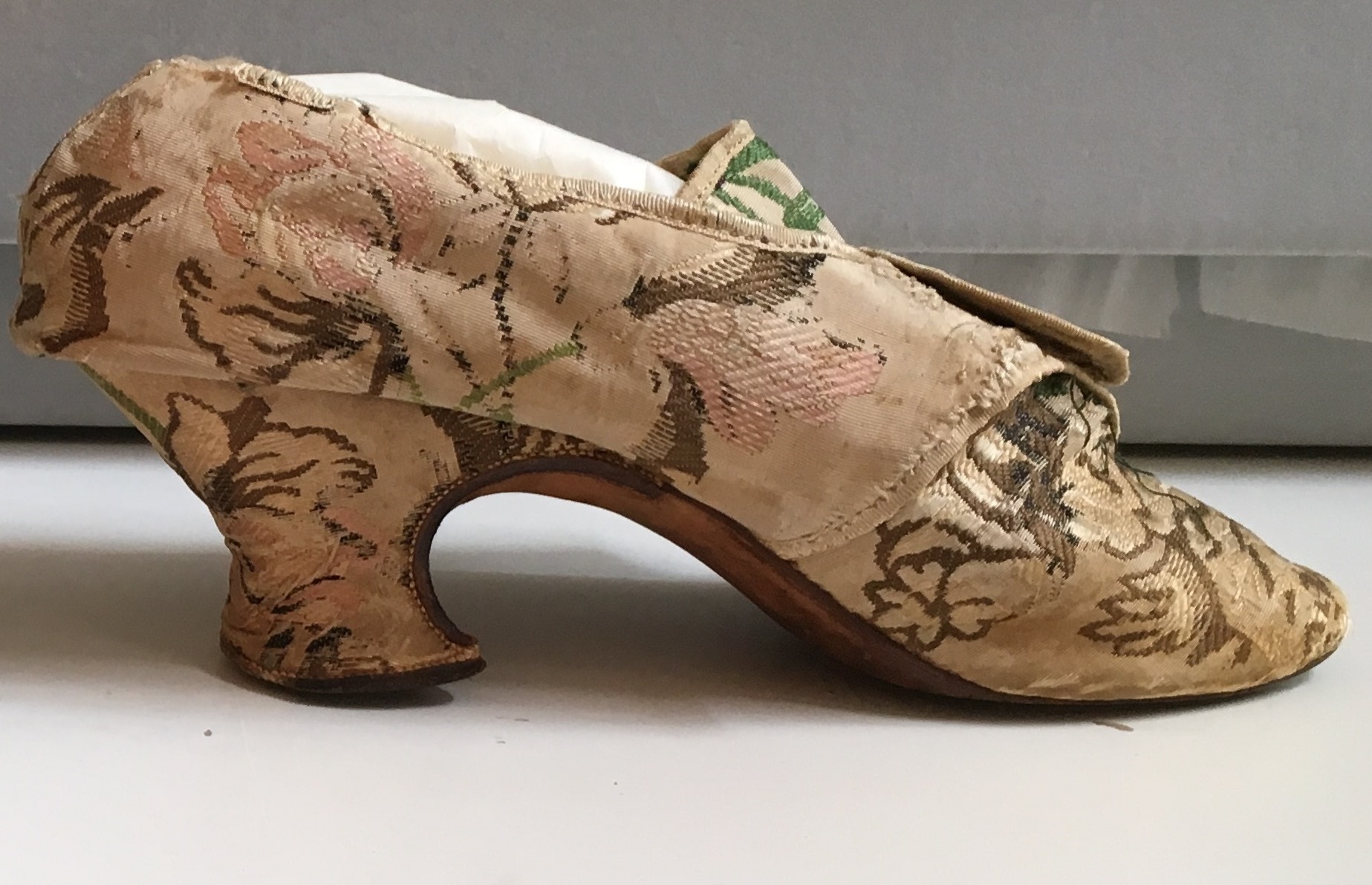 |
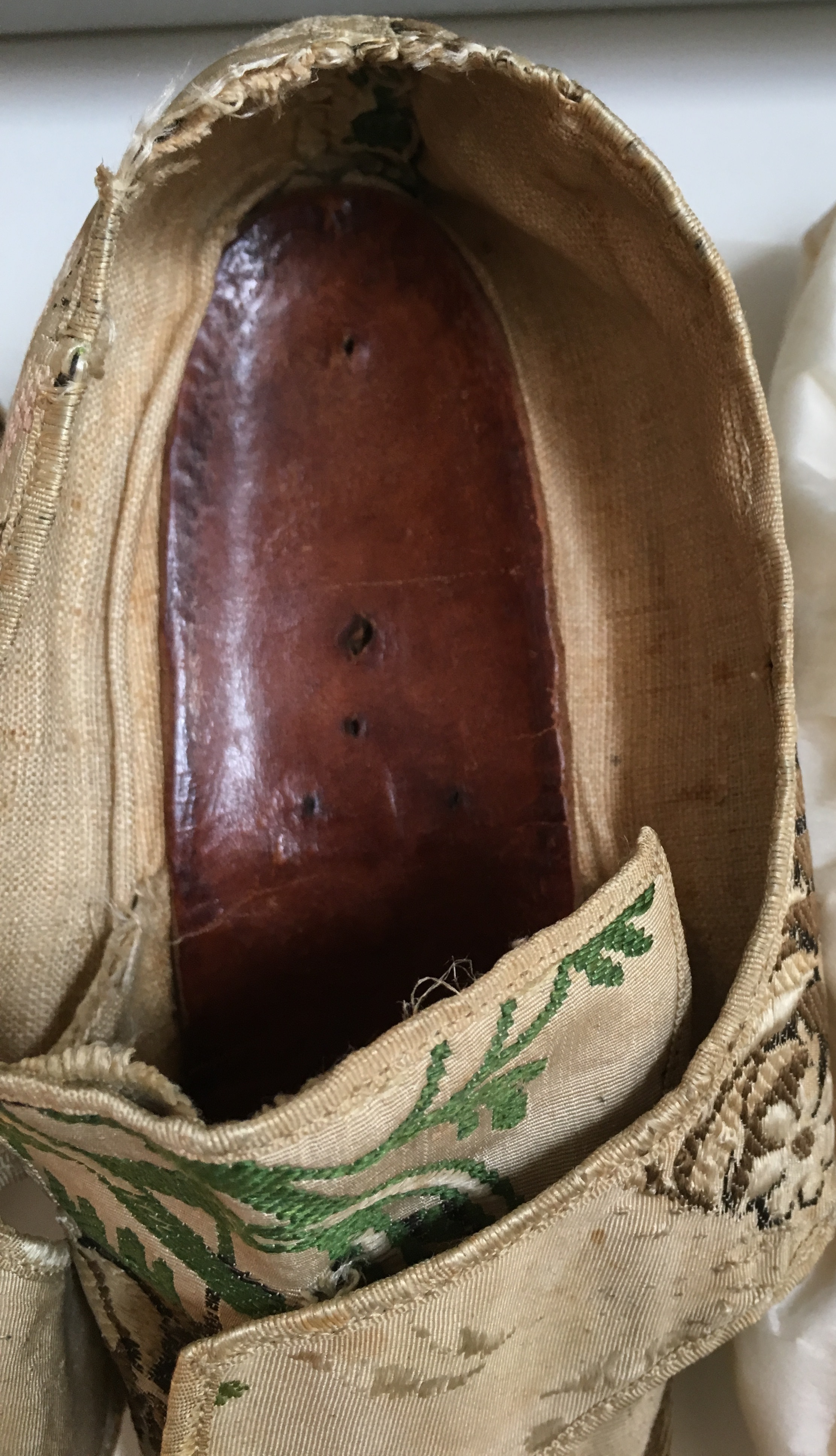 |
The Louis heel is made of wood and covered to match the top or “upper” of the shoe and features a reverse curve on the back (called the “neck”) of the heel. This curve is meant to mimic the curve under the arch of the shoe. The sole of the shoe is made entirely of one piece, which covered the not only the area under the toe, but the arch and inside of the heel (called the “heel breast”) down to and sometimes covering the bottom of the heel (called a “top piece”).
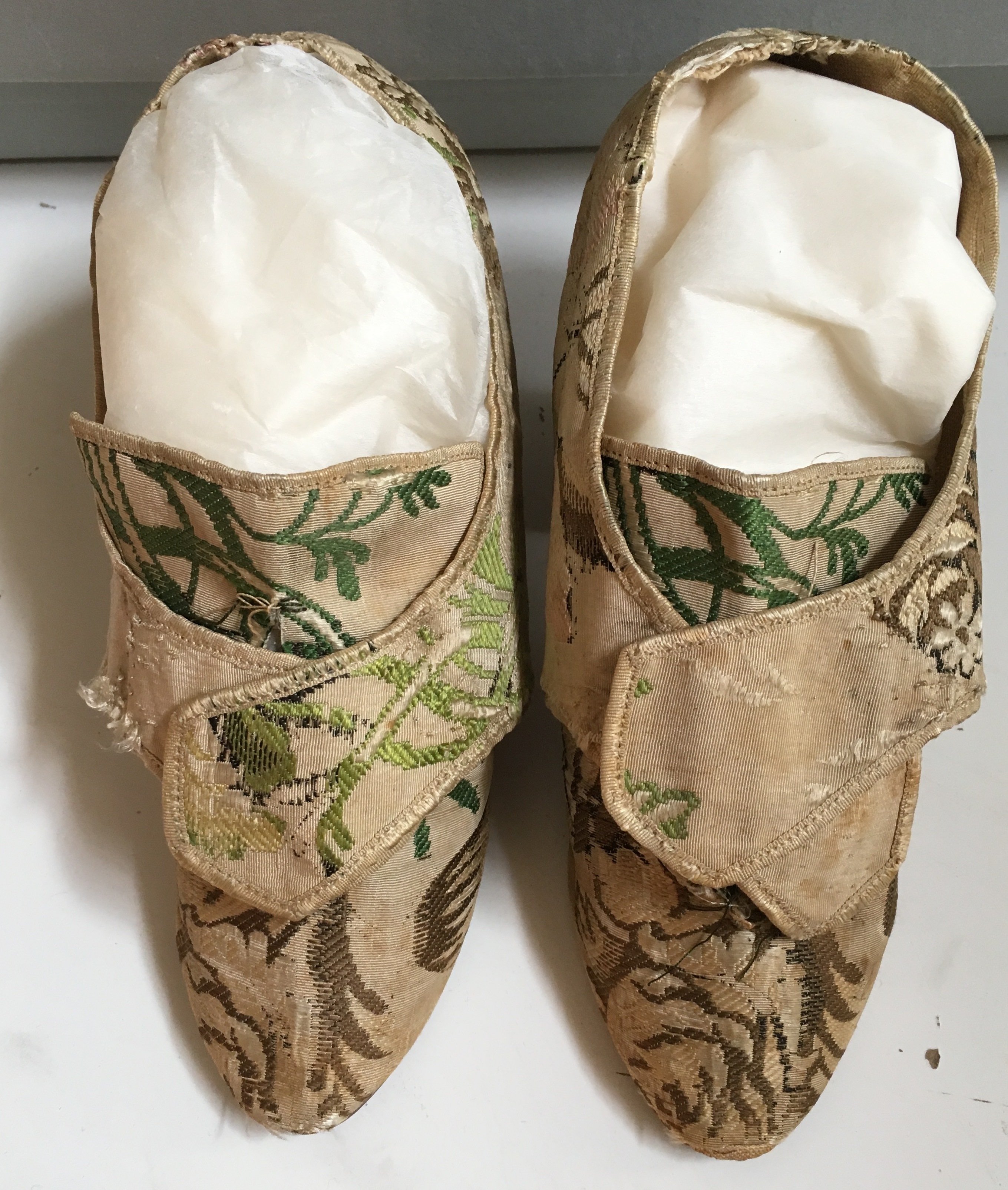 |
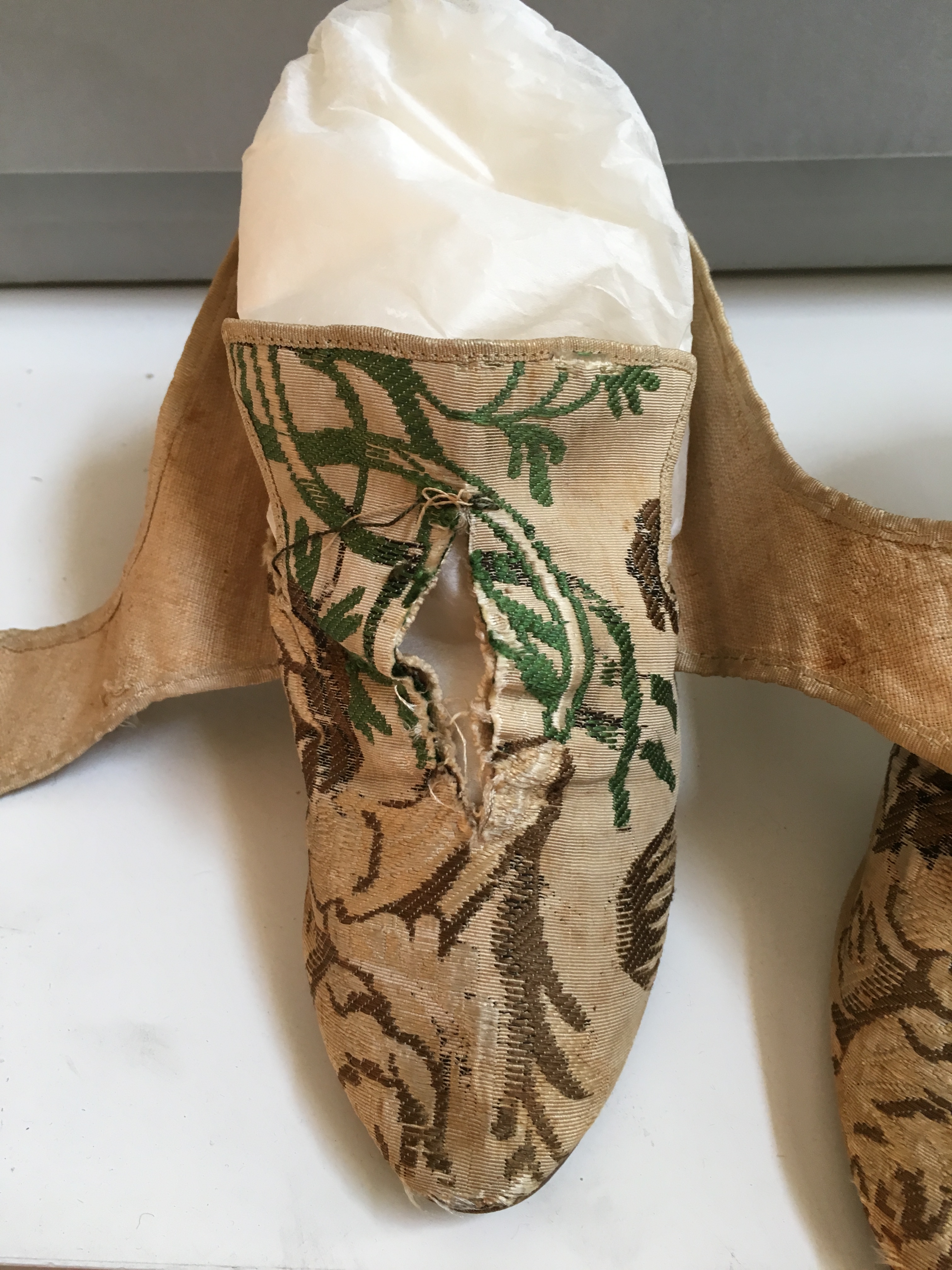 |
While the heel of the shoe is a very elegant feature, the star is the fabric. These particular shoes feature an embroidered fabric with once vibrant green, pink, and brown floral designs that have since faded. The vamp of the shoe (the part of the shoe covering the toe and attaching to the sole) has suffered some discoloration as well from wear, but if we open the buckle straps, the color is better preserved. The square, shortened tongue is a common characteristic of 18th century shoes.
|
Margaret Tilghman, Mrs. Charles The Barrister Carroll by John Hesselius c.1765, 1976.6.1 Gift of John G. Earle, Miss Elizabeth Campbell Earle, and Matthew Tilghman Earle |
Our next pair of shoes have many similarities but also some striking differences from Mrs. Moale's shoes. These shoes were worn by Margaret Tilghman Carroll (1742-1817), wife of Charles Carroll the Barrister (1723-1783) of Mount Clare. Her name is scrawled on the quarter lining inside each shoe.
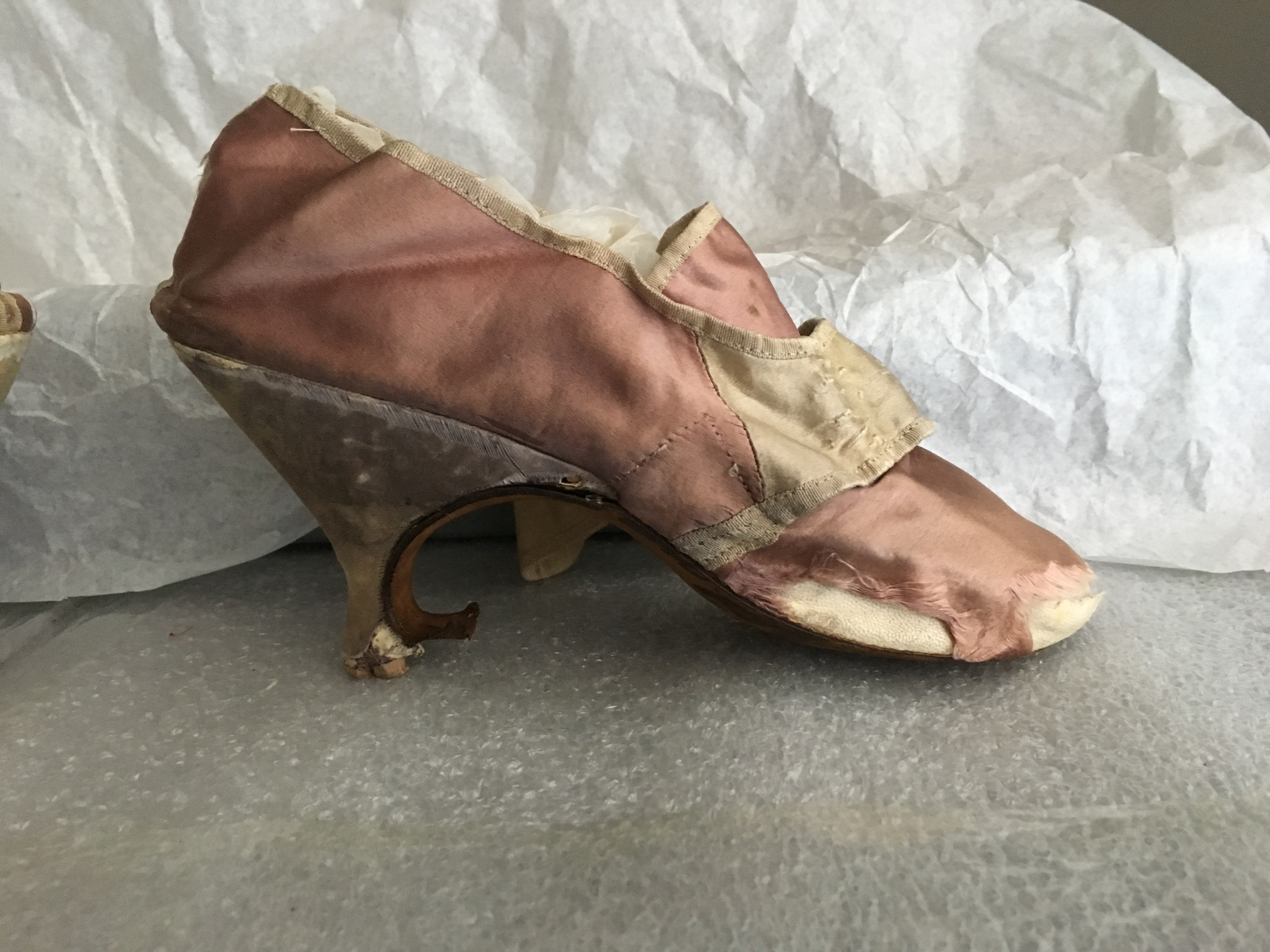 |
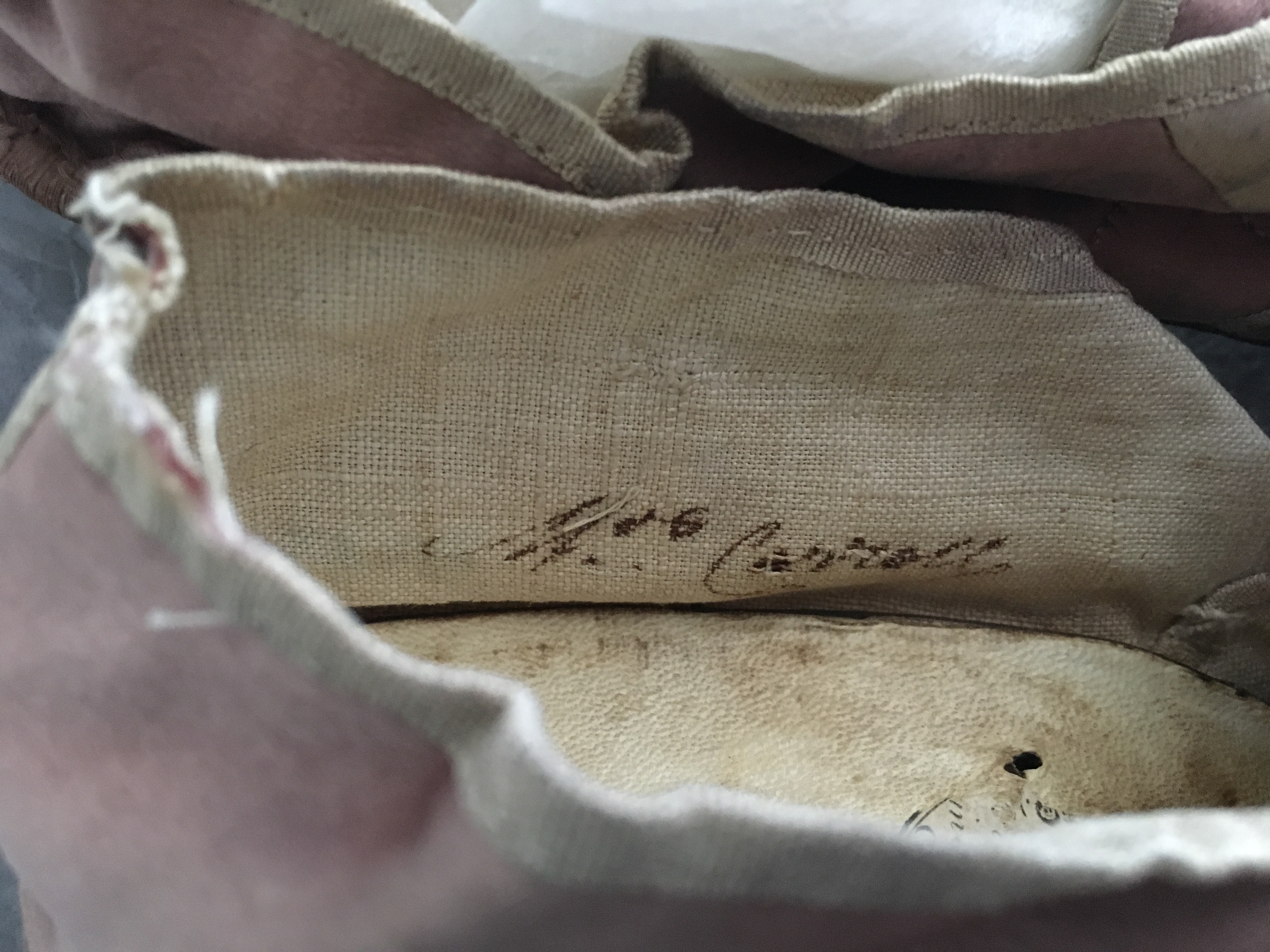 |
These shoes look a little worse for wear than the previous pair, partially because the upper of the shoe is made of a thin silk instead of a thicker embroidered fabric. The now pink silk would have been purple and the heel covering would have matched the upper.
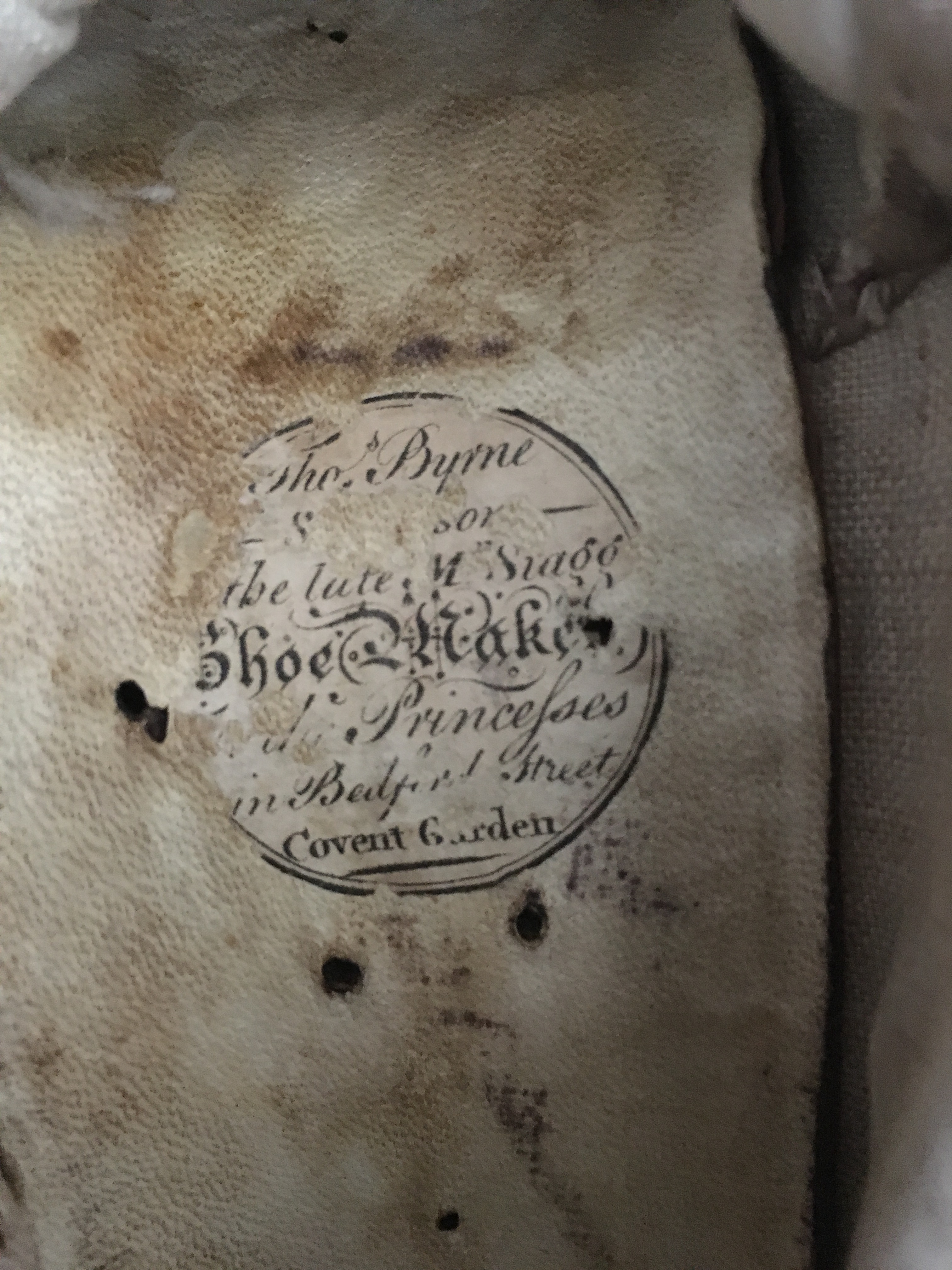 |
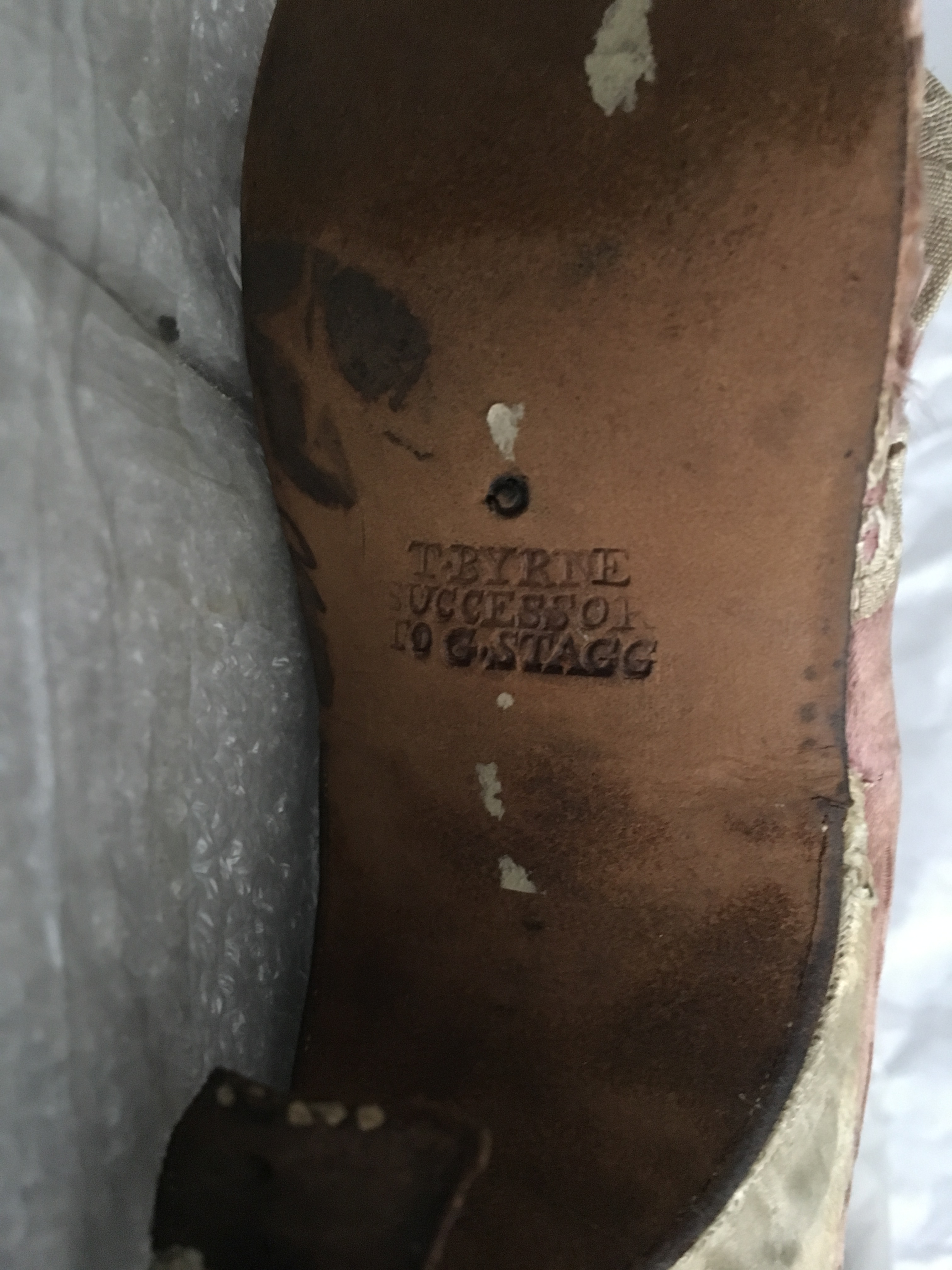 |
Unlike the last pair, the silk shoes feature a maker's mark on the insole (also called a “sock lining”) and sole of the shoe. Shoemaking is an early industry and we find makers marks much earlier than we would dresses or other costume accessories. The stamps provide another level of information about the pieces. The stamp reads “The Bryne /Successor / the late “M” Stagg/ Shoe Maker/ ___ Princefses/ in Beford Street / Convent Garden” and the sole is simply stamped “T. BYRNE/SUCCESSOR/TO G. STAGG.” This label tells us a few things, first that the shoes were made in London and imported to the United States, and second, that the current shoemaker had taken over from a noteworthy predecessor in the shoe making business. As he lists his own name first, he must be proud enough of hiswork and probably hoped to one day shed his predecessors name from his label.
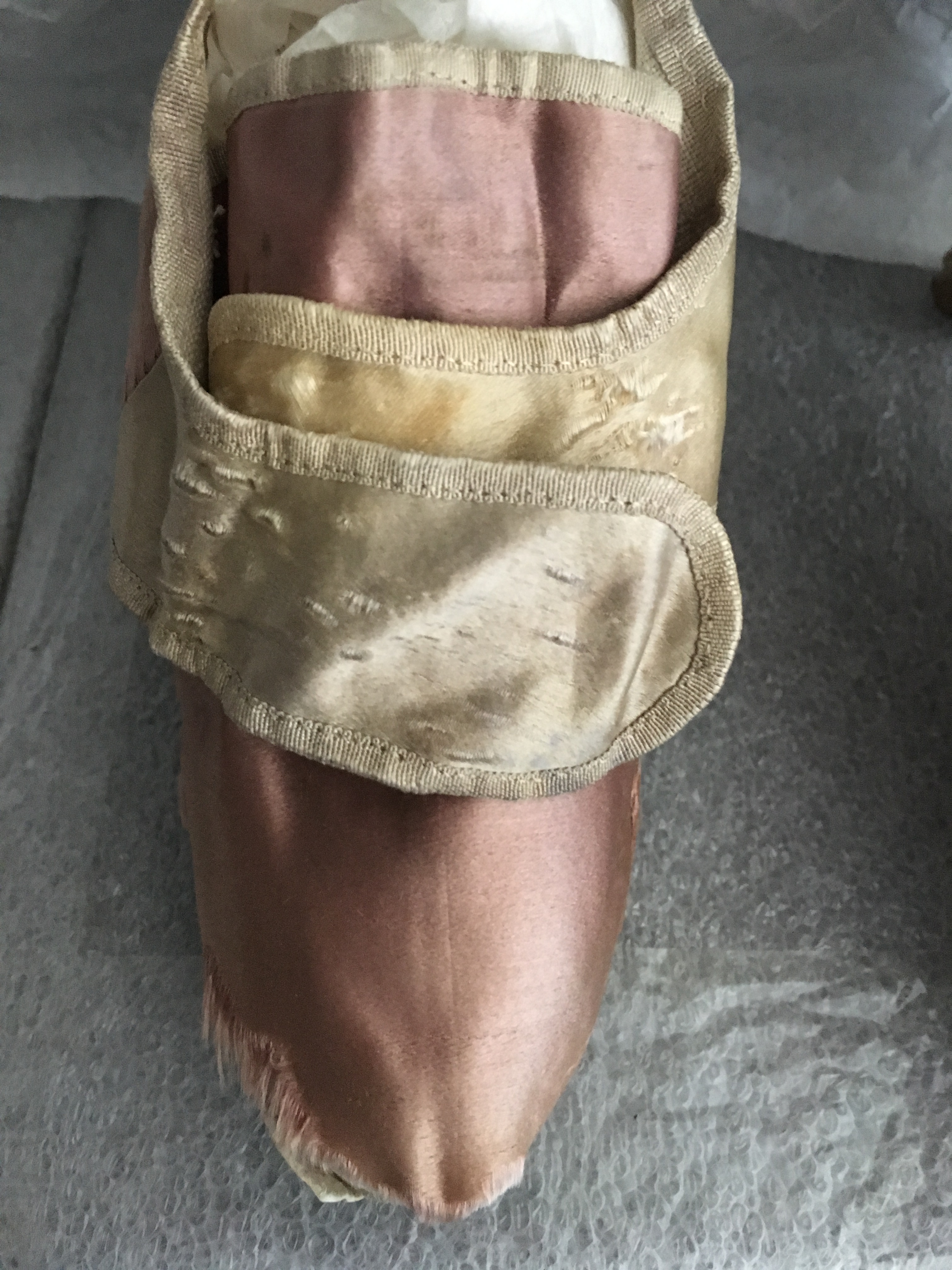 |
 |
Left, detail of buckle straps showing multiple marks from various shoe buckles. Right, Woman's silk damask shoes with buckles, 1740-1750, England. Los Angeles County Museum of Art, M.81.71.1a-b.
A common characteristic of 18th century shoes (both men's and women's) is that they closed with buckles. As the buckle was separate, the wearer could change the ornate buckles to coordinate with the ensemble or freshen up a pair of shoes that had been worn before. Women's shoes, especially the luxurious silk import shoes like Mrs. Carroll's would have been very expensive, and this allowed her to extend the use of the shoe. The picture on the left above shows multiple splits in the silk of the buckle strap, which allude to Mrs. Carroll having changed the buckle she wore with the shoe.
 |
 |
While women's shoes changed very little in the 18th century, there was great variety in the overall appearance thanks to a multitude of fabrics. Toward the end of the 18th century heels lowered and in the early 19th century, a new fashion grew in popularity- the flat slipper.
You can help us preserve these wonderful shoes and other objects through our Adopt-A-Box program. Every donation helps!
New Call-to-action
References:
Black, J. and M Garland (1975). A History of Fashion. New York: William Morrow and Company, Inc.
Earle, Alice M (1924). Costume of Colonial Times. New York: Empire State Book Co.
Rexford, Nancy E (2000). Women's Shoes in America, 1795-1930. Kent, Ohio: The Kent State University Press
Warwick, E., H. Pitz, and A. Wyckoff. Early American Dress: The Colonial and Revolutionary Periods. New York: Bonanza Books.


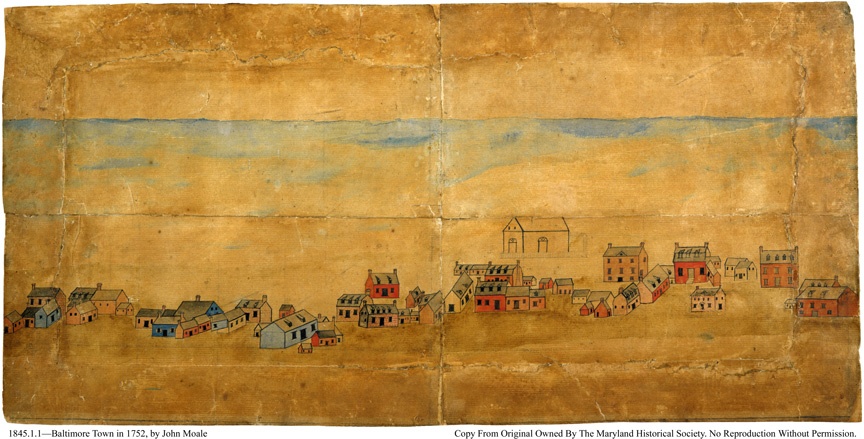
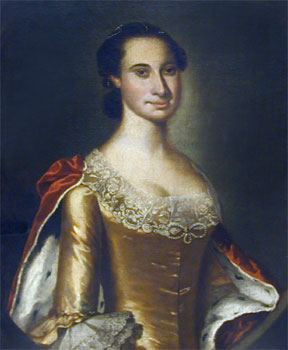
![197661 [1]-2.jpg](https://www.mdhistory.org/wp-content/uploads/2020/03/blogs//197661205B15D-2.jpg)